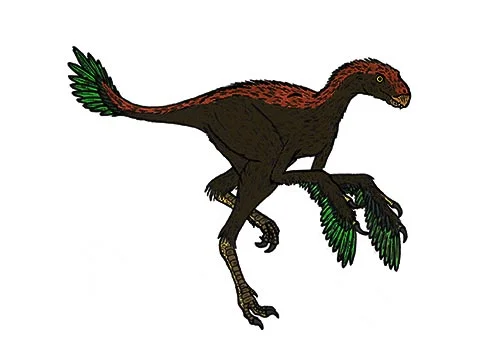Protarchaeopteryx (Before Archaeopteryx)

Prot-ar-ke-op-teh-riks
Q. Ji & S.-A. Ji - 1997
Carnivore
Estimated up to 50 centimeters long
Small Theropod
P. robusta (type)
China, Liaoning Province - Yixian Formation
Early Cretaceous, 130 million years ago
Protarchaeopteryx Facts
Protarchaeopteryx, meaning “before Archaeopteryx,” is a genus of small, feathered dinosaur that lived during the Early Cretaceous period, approximately 130 million years ago. It was a member of the group known as theropods, which were characterized by their sharp, serrated teeth and bipedal stance.
Protarchaeopteryx was first discovered in China in 1997 by a team of paleontologists led by Ji Qiang. Since then, additional fossils have been found in the same region, providing valuable insights into the evolution of early birds and the origin of feathers.
Protarchaeopteryx was a small dinosaur, measuring only around 50 centimeters (20 inches) in length and weighing less than 1 kilogram (2.2 pounds). It had a slender build, with long, powerful hind legs that allowed it to run at high speeds. Its arms were relatively short and ended in three-fingered hands with sharp claws.
Like its famous relative Archaeopteryx, Protarchaeopteryx had feathers, although they were more primitive in structure. Instead of the fully developed flight feathers of modern birds, Protarchaeopteryx had simple, hair-like feathers covering its body. These feathers likely served a number of functions, such as insulation, display, or camouflage.
Protarchaeopteryx also had a number of skeletal features that suggest it was in the process of evolving to become more bird-like. For example, it had a keeled sternum, which would have provided a larger attachment area for flight muscles in later, more bird-like dinosaurs.
As a paleontologist, studying fossils of Protarchaeopteryx and other early feathered dinosaurs helps us to better understand the evolution of birds and their close relatives. It provides evidence for the idea that feathers evolved for functions other than flight, and that the transition from dinosaur to bird was a gradual process that involved many intermediate forms. The discovery of Protarchaeopteryx and other early feathered dinosaurs has revolutionized our understanding of the origins of birds and the evolution of feathers.



